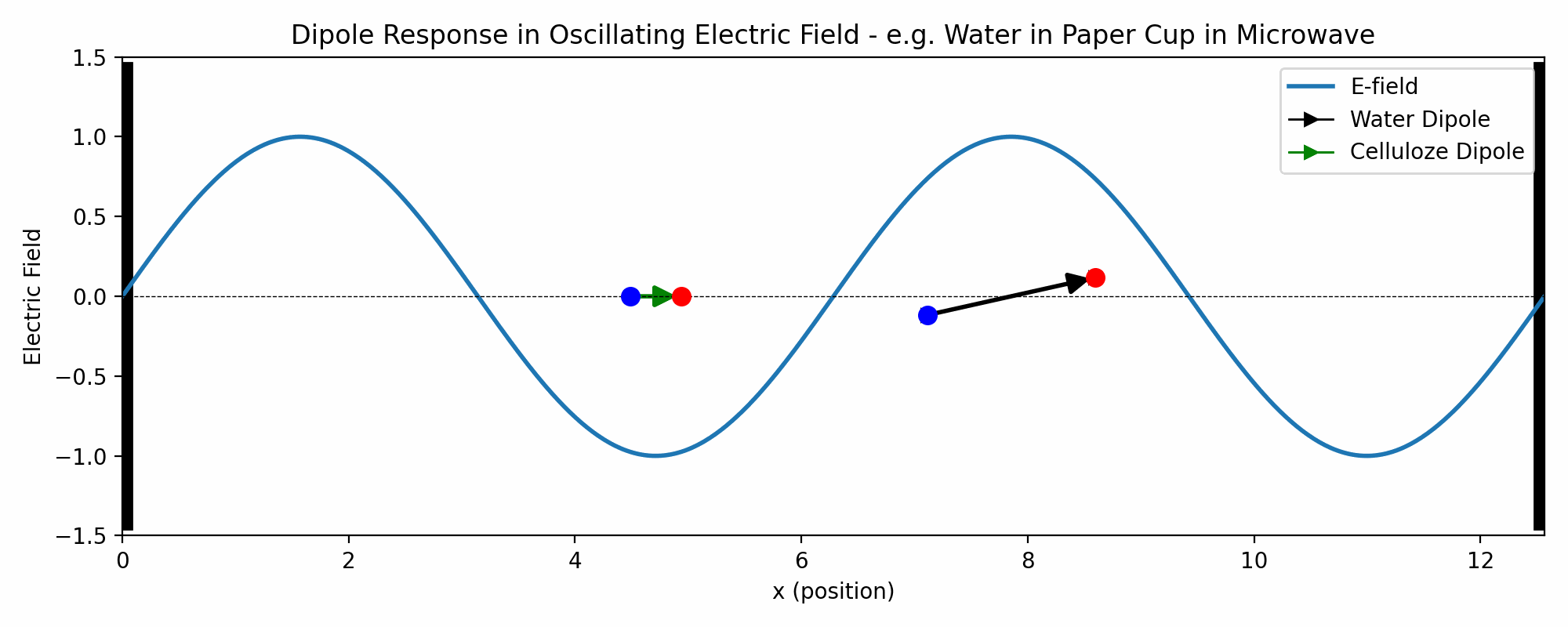💡 Simulation of Dipole Response in an Oscillating Electric Field
This Python animation illustrates the behavior of two types of molecular dipoles—water and cellulose—in response to an oscillating electric field, mimicking the interaction of microwaves with materials like a paper cup containing water.
-
💧 Water Dipole: Represented by a flexible molecule that rapidly rotates to align with the electric field direction. The length of the dipole oscillates slightly to reflect the varying strength of interaction.
-
📄 Cellulose Dipole: Represented by a rigid, weakly polar molecule such as paper fibers. Instead of rotating, it exhibits only a limited wobble (±10°), simulating the low polarizability of cellulose.
The result is an intuitive visualization of why water heats up in a microwave while the paper cup remains cool—a direct consequence of molecular dipole dynamics in response to electric fields.
🔬 Medical Applications of this principle include:
-
Diathermy – using high-frequency EM waves to heat deep tissues for pain relief and muscle relaxation.
-
Hyperthermia Cancer Therapy – selectively heating tumor tissues to damage or kill cancer cells.
-
MRI Safety – understanding field-dipole interactions helps evaluate heating risks in patients with implants or metal objects.
-
Insulin Absorption Variability – oscillating fields may influence tissue permeability and insulin diffusion.
